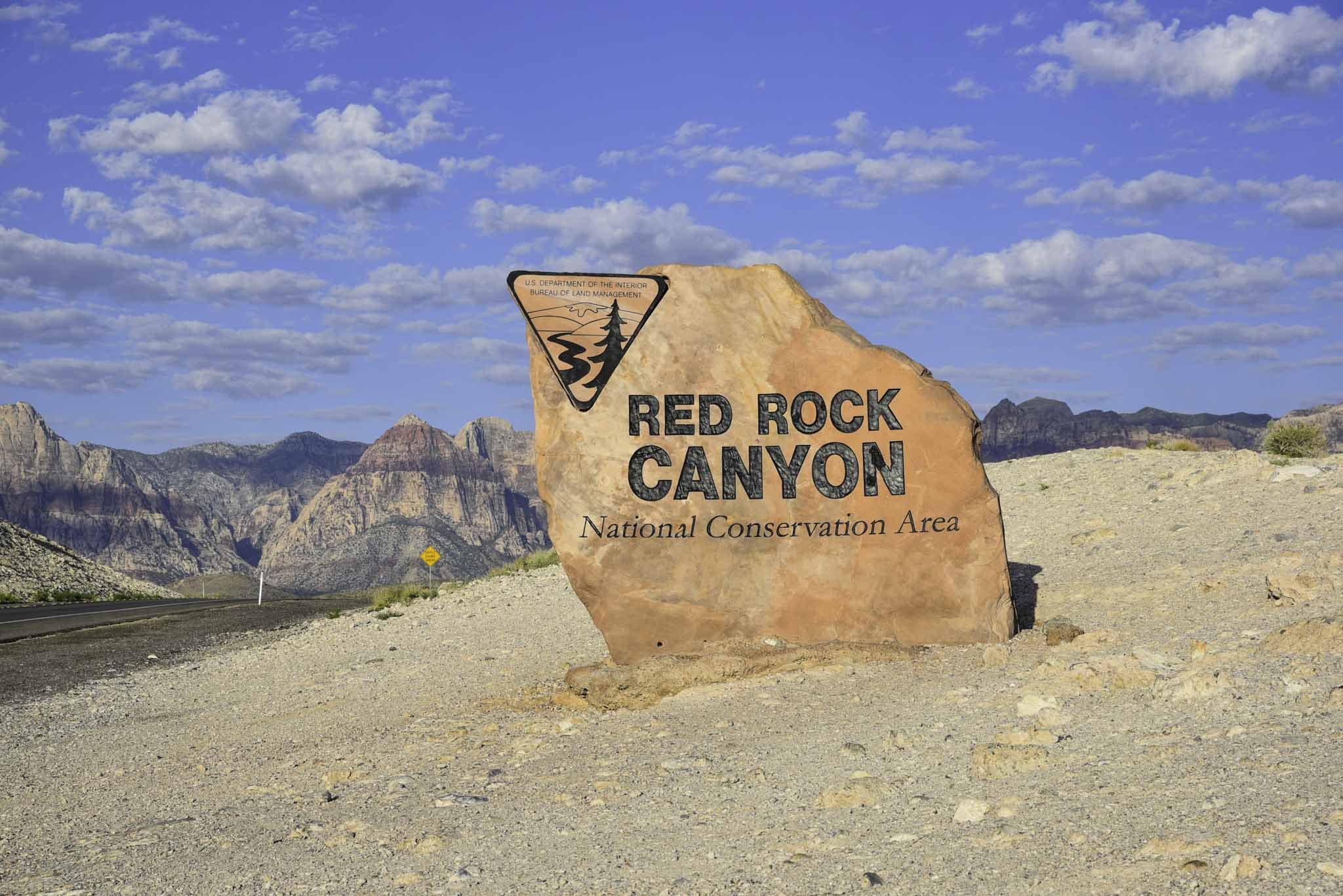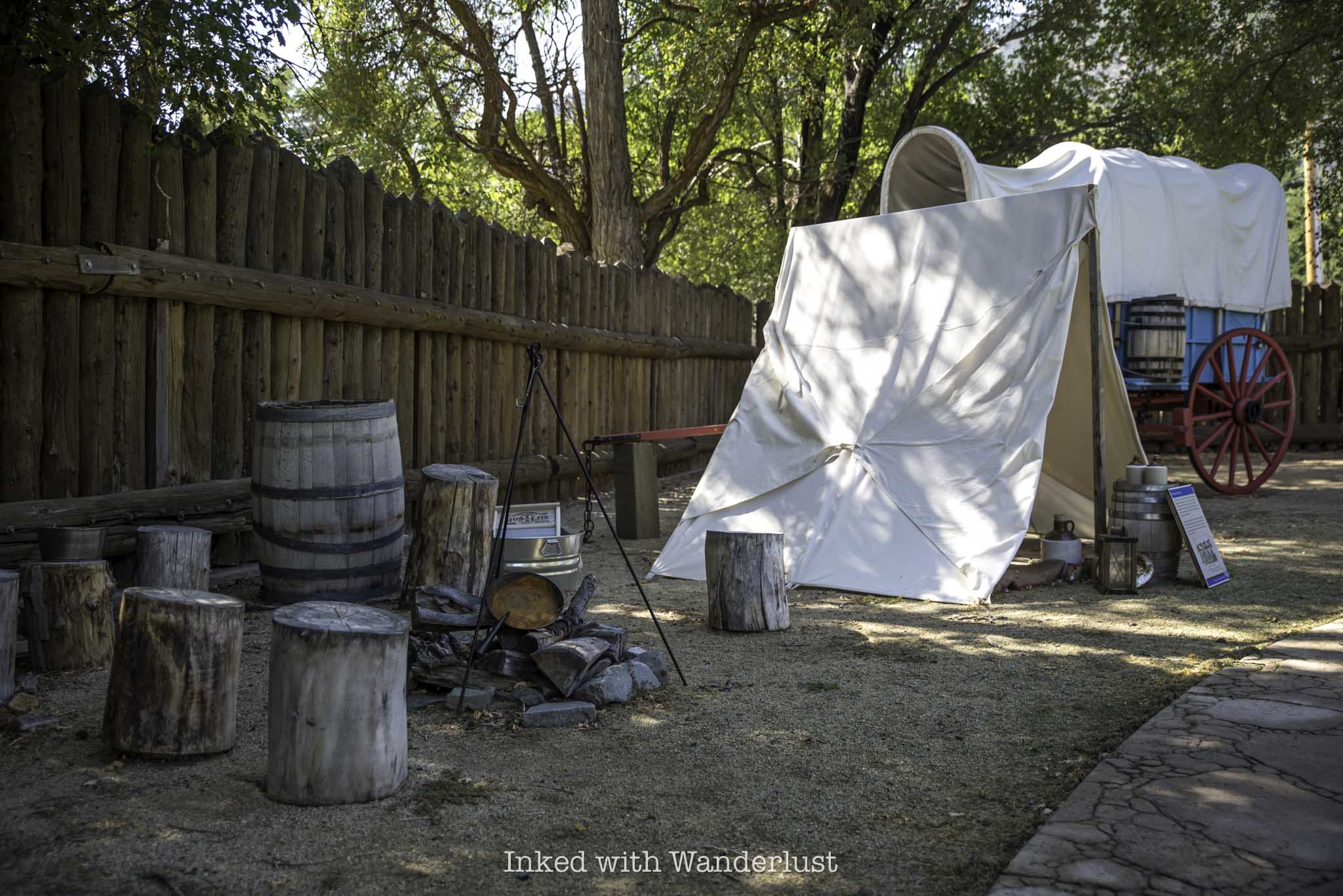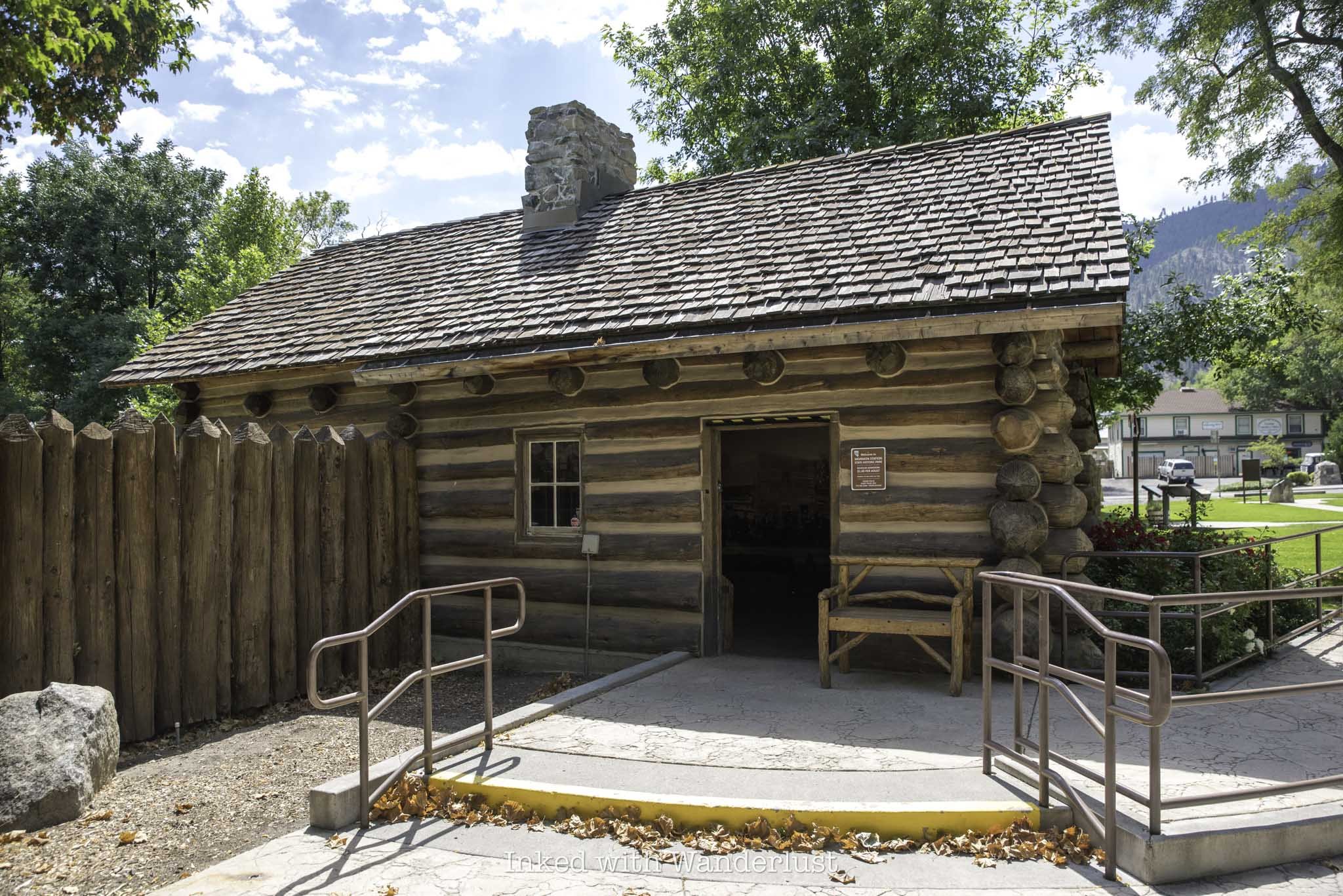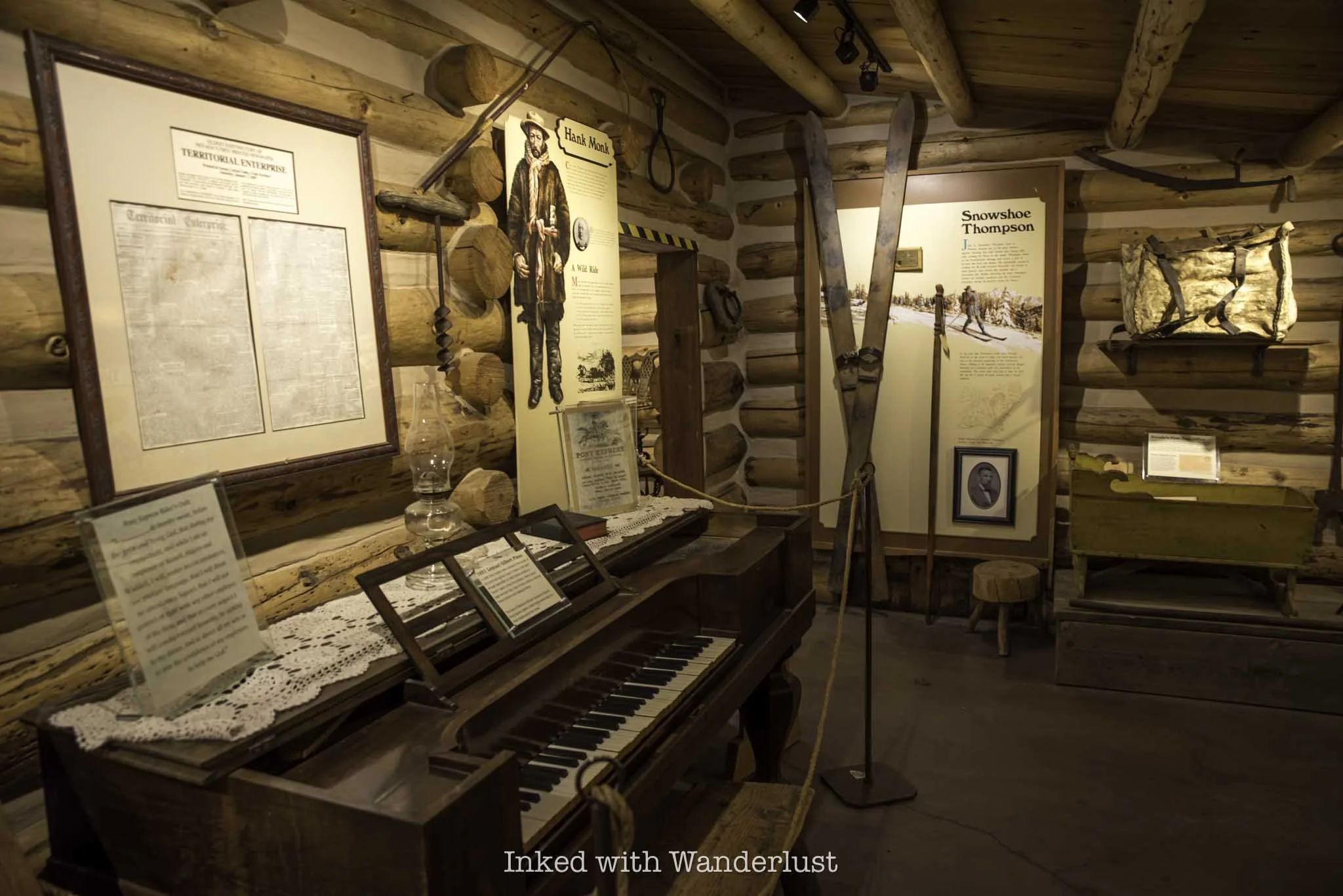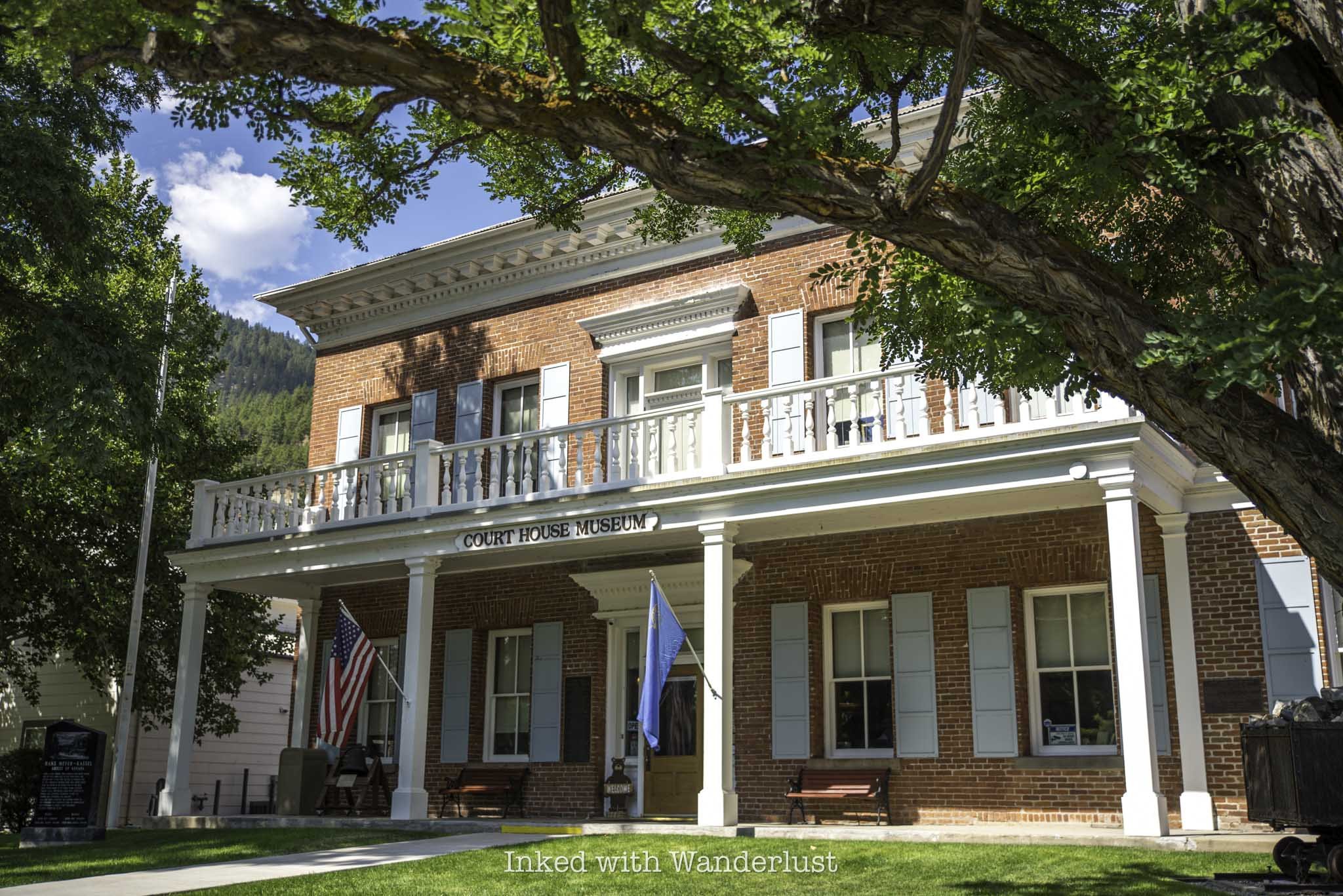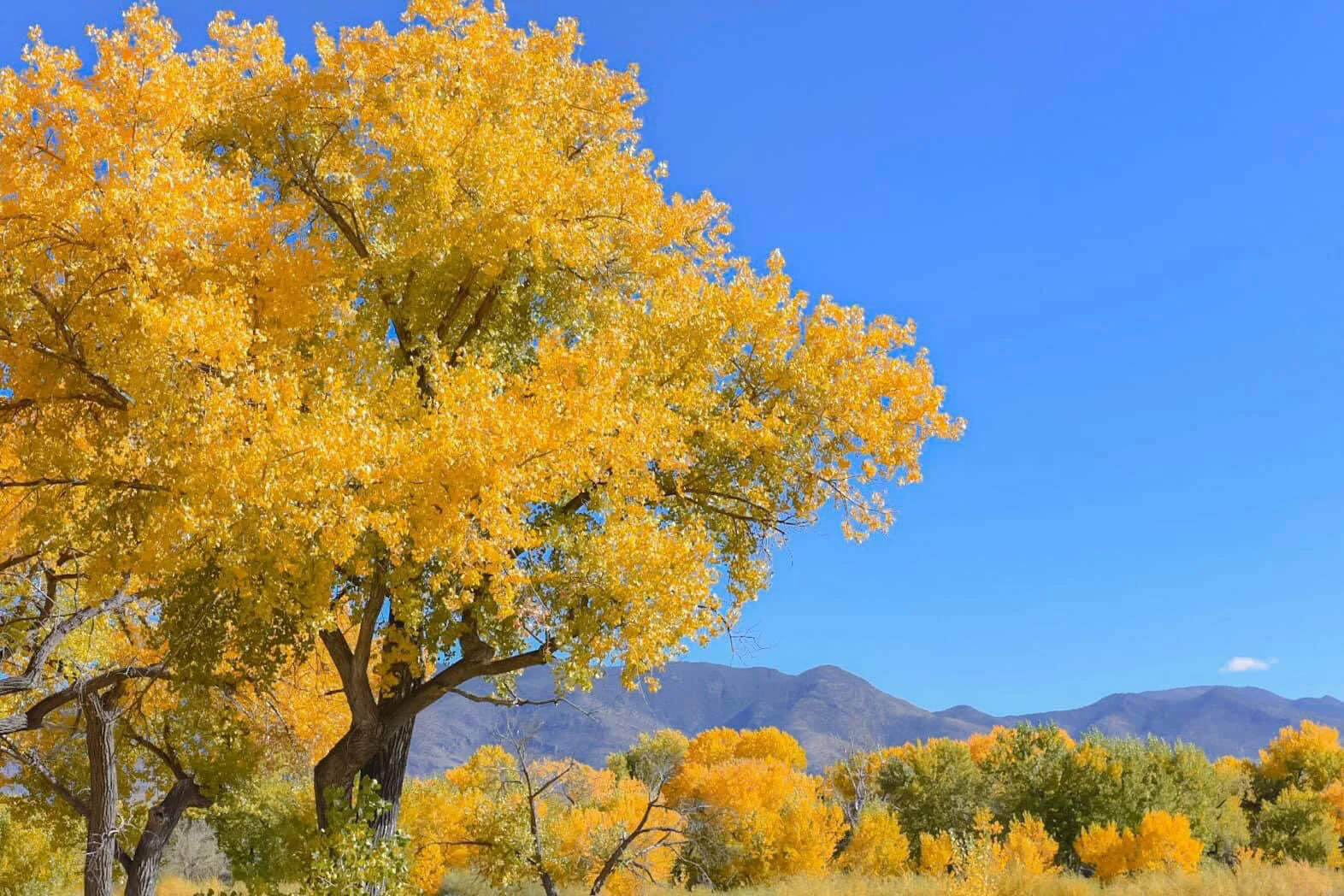7 Historical Sites in Genoa You Should Explore
The small community of Genoa, Nevada, set in the beautiful Carson Valley, is one of, if not the, most historically significant sites in the state...
Disclosure: This post contains affiliate links. If you make a purchase through these links, I may earn a small commission at no additional cost to you. I only recommend products or services that I believe will add value to my readers.
The small community of Genoa, Nevada, set in the beautiful Carson Valley, is one of, if not the most historically significant sites in the state. This is because the town was founded as the first pioneer settlement in Nevada in 1851, a whopping thirteen years before it even gained statehood.
This happened when the John Reese Party, a group of Mormons from Utah, emigrated to what was then an area within the territory of Utah to set up a trade post to sell much needed goods and services to pioneers before they begin the final, most challenging leg of their journey to riches in the gold-dense California mountains.
That trade post would eventually become what we know today as “Mormon Station”. Prior to Reese establishing his trade post, pioneers were forced to stock up at the former final trade post before California’s infamous Sierra Nevadas in Salt Lake City, a hearty 500 miles away. You can see how it became so popular and successful.
As time went on, and especially with Nevada completing its statehood campaign in 1864, more and more of the town began to develop with additional residents moving here to stake their own claims with varying businesses and accolades. Some of which would stand the test of time and remain to this day, though many aren’t operating as they did in the 1800’s and early 1900’s.
If you’re a fan of Nevada history, a visit to Genoa is a must. There are many historical sites within Genoa, Nevada itself that are worthy of your time and in this post, I will discuss and recommend seven of them, and provide some context as to their historical significance. Let’s get into it.
1) Mormon Station Historic State Park
We’ll begin with the most historically significant site in Genoa - Mormon Station Historic State Park. As stated above, this is the site where it all began for Genoa and no visit to this charming town would be complete without it.
You’ll find it on the corner of Genoa Lane and Jacks Valley Road shortly after driving into town. There’s ample (and free) parking and best of all, the exterior portion of the former stockade is free to explore, while the accompanying museum only charges a paltry $1 to enter.
The museum is small, but packed with historical items germane to the site and area. A few items include wooden skis used by Snowshoe Thompson to traverse the California mountains, actual makeshift escape keys used by prisoners of the jail, a burnt piece of log from the original stockade, and more. The museum’s structure is a replica of a cabin, similar to the one lived in by Mormon Station’s founder, John Reese.
Throughout the grounds, you’ll also see the original structures of a former blacksmith’s shop and chicken coop, as well as examples of pioneer-era wagons, tools, a memorial statue of Snowshoe Thompson, numerous informational boards detailing the area’s history, and more.
READ MORE: “Visit the Historic Mormon Station in Genoa”
2) Snowshoe Thompson’s Grave Site
John A. “Snowshoe” Thompson, also known as the, “Mailman of the Sierras”, was an important figure in mid-to-late 1800’s Genoa, Nevada. When no one else would (or even could) Thompson, without ever being formally compensated, delivered the mail over the Sierras between Genoa, Nevada and Placerville, California through the heavily snow-packed mountains, using nothing but homemade skis (known as “snowshoes” back then).
This journey took him an average of three days when traveling west to California, and about two days when going back to Nevada. He was uniquely skilled to complete this demanding task, as Thompson was a native of Norway, and traversing mountains in this manner came naturally to him. In fact, on one occasion, Thompson was credited for saving the life of a man who was stranded in this portion of the Sierras.
Thompson passed away on May 17, 1876 after a brief illness and was buried in what is now the historic Genoa cemetery, a half mile north of town, in a shared plot with his family. His grave has become a tourist attraction of sorts, with signs pointing the way as soon as you drive into the cemetery grounds. Fittingly, a plastic toy of a USPS truck remains at his tombstone, a subtle nod to his sacrifice and service to a community in need.
3) Genoa Bar - The Oldest Bar in Nevada
You may not be into bars, I’m not either, but there’s no way you can pass up the chance to enjoy a drink at the oldest bar in Nevada. Genoa Bar opened in 1853, not long after Genoa was first settled and a full eleven years before Nevada was granted statehood.
Many celebrities and dignitaries frequented this bar, including the likes of Mark Twain, Teddy Roosevelt, John Wayne, Raquel Welch, Snowshoe Thompson, and more. The interior walls are adorned in quirky items, such as buffalo heads, old photographs, bottle caps, paintings, and more.
They feature a menu consisting of specialty cocktails, including their world-famous Bloody Mary. However, they do have a full bar and can make you just about anything you’d want if you’d rather have something simpler. There’s no food service inside, but there’s usually a food truck parked outside during the peak travel season.
READ MORE: “Enjoy a Drink at Genoa Bar: The Oldest Bar in Nevada”
4) The Hanging Tree
The Hanging Tree in Genoa Nevada is a morbid, yet historically significant site. Known as the “blackest day in Nevada history”, it is where Adam Uber, a drifter from California, was hung after shooting and killing local teamster Hans Anderson during a drunken fight at a local bar (not Genoa Bar discussed above).
Uber was taken into custody and thrown in a jail cell at the Genoa Courthouse that night. However, locals weren’t happy with the way Uber’s trial was going and instead, decided to take matters into their own hands.
Roughly a week or so after the killing, a drunken mob of vigilantes stormed the jail in the middle of the night, removed Uber from his cell, marched him down what is now Genoa Lane, and strung him from the tree you see in the photo above. To ensure he was dead, a vigilante then shot Uber in the head.
Just prior to his hanging, Uber was said to have cursed those in the crowd for, “several generations”. This was rumored to have actually come to fruition, as those who took part in the hanging began to die in suspicious ways. In an effort to quell the curse, locals cut down the branch Uber was hung from. The tree, however, remains standing to this day and a plaque was placed near the stump of the cut branch.
5) David Walley’s Hot Springs Resort
In the late 1850’s, a young New Yorker by the name of David Walley came to Genoa to do what many came here to do - strike it rich. However, his luck didn’t come from the golden hills of California or the Comstock Lode in Virginia City, like it did for so many others. Instead, it came from the earth’s mantle just a mile and half from town.
While digging a tunnel nearby, Walley stumbled upon the hot springs. Once he took a dip and experienced the benefits of the springs for himself, he purchased the land and began charging folks fifty cents to experience it for themselves. Later, in the early 1860’s, an opulent 40-room resort hotel was built on the property, playing host to numerous celebrities and dignitaries over the years.
The property has had numerous owners throughout its history, including the current owner, IHG Resorts and Hotels. Today, a few original aspects of the resort remain, including one of the stone pools. Additional rooms and suites have been added, in addition to an on-site restaurant, 1862 Restaurant and Saloon. You can find rates and booking information here.
6) The Pink House
This Gothic Revival-style house was built in 1855 and was home to many Genoa families, the most notable of which include the Reese family, who were the founders of the original settlement. The most known resident, however, was Lillian Finnegan, who went on to found the annual Candy Dance festival.
Today, the former house serves as a restaurant, offering guests a variety of tasty dishes, including pizzas, burgers, sandwiches, steaks, and more. There’s plenty of seating throughout the property, including on the front porch, in the living room, and outside in the side yard.
There are a few notable places to eat in Genoa, but The Pink House is the only one listed on the National Register of Historic Places for its significance and importance to Genoa and Nevada as a whole. It’s a great place to eat after working up an appetite exploring the area.
7) Genoa Courthouse Museum
In my opinion, one of the best things to do in Genoa, Nevada is exploring the many exhibits at the Genoa Courthouse Museum. It’s easy to get to as it’s right across the street from Mormon Station State Park and just down the street from The Pink House.
Entrance fees to the museum are minimal and include access to both levels. A few of the exhibits include a recreation of Snowshoe Thompson’s cabin with items actually owned by him, the refurbished Genoa courthouse, and the downstairs jail, with the original cells included.
In case you’re wondering, yes, one of the cells you’ll see here is where Adam Uber, the drifter from California discussed above, was taken from by the group of vigilantes and hung at the Hanging Tree. It was an eerie feeling stepping inside those cells.
I thoroughly enjoyed my time in the Genoa Courthouse and have no doubt you would as well. Keep in mind that they’re only open seasonally and even then, their hours are minimal. Check out my post about the Genoa Courthouse Museum for all of those details.
READ ALSO: “Step Back in Time at the Genoa Courthouse Museum”
Visit the Historic Mormon Station in Genoa
When searching for historic places in Nevada to visit, it doesn’t get much more historical than visiting the site of the first settlement in the state, Mormon Station Historic State...
Disclosure: This post contains affiliate links. If you make a purchase through these links, I may earn a small commission at no additional cost to you. I only recommend products or services that I believe will add value to my readers.
Mormon Station History
When searching for the best historic places in Nevada to visit, it doesn’t get much better than the site of the first settlement in the state, Mormon Station Historic State Park in the charming town of Genoa city, Nevada.
It was here in 1851 where the John Reese Party emigrated from Utah to construct the Mormon Station. While often referred to as a “fort”, it, in fact, never served as such. There was never a military presence, nor did any battles take place here.
Instead, it was actually a stockade, which is defined as an enclosure of walls built with logs placed vertically, side by side. Instead of cannons and officer’s quarters, you would often see grazing oxen, stable sheds, bails of hay, and a small vegetable garden. In addition to the stockade, John Reese also built a hotel and blacksmith shop near the stockade.
The purpose of the stockade was to house oxen and other farm animals, in hopes to sell them to other emigrants traversing the trail. Additionally, the stockade provided protection from thieves, as these animals were highly valuable, while also providing refuge in the event of an attack.
In addition to the stockade, John Reese and party cultivated about thirty acres of land and planted many fruits, vegetables, and grains. Many emigrants coming through were astounded to see fresh crops, as many claimed it was the first bit of cultivated land they’ve seen since leaving the Missouri River - a distance of nearly 2,000 miles!
Thanks to James Marshall and his discovery of gold in California in 1848, the rush was on, and Mormon Station served as an important supply stop for those braving the mighty Sierra Nevada Mountains with gold in their eyes. The station was badly needed as the final supply station prior to Mormon Station was in Salt Lake City, nearly 500 miles away.
Mormon Station Fees and Parking
Parking is both plentiful and free at Mormon Station Historic State Park. There’s a small gravel lot in front of the side entrance, just off of Genoa Lane. If this is full, additional parking can be found along Jacks Valley Road in front of the museum and/or the Snowshoe Thompson memorial statue.
If on the off-chance both of these areas are full, you can park across the street on either Genoa Lane or Jacks Valley Road, or in a small parking area adjacent to the Genoa Bar and Saloon. From the saloon, it’s a quick walk to the station.
The only fee you’ll have to pay is the meager price of $1 per person to enter the museum. Entry into the exterior portion of the station is free, though. So if all you want to do is walk the path and check out the displays, you can do so free of charge. Though I do recommend popping into the museum, as there is a lot to look at in there.
Mormon Station Exterior Path and Displays
The exterior pathway and its displays can be accessed from either side of the log-built wall, in addition to the main entrance adjacent to the museum. Again, access to this portion of the park is free. One thing to keep in mind is that, unfortunately, the station you see today isn’t original, but a replica.
In 1910, a massive fire ripped through Genoa city, Nevada, and destroyed many of the original structures in town. There wasn’t much left of the original station so in the late 1940’s, the replica was built in order to honor and help preserve what is essentially the birthplace of Nevada.
*Fun Fact: Nevada didn’t become a state until 1864, thirteen years after Mormon Station was built. Since Nevada became a state during the Civil War, it earned the moniker, “Battle Born State”
That shouldn’t stop you from visiting, though, as there are many artifacts on display that were used during that period, as well as those actually owned by John Reese and Snowshoe Thompson, Genoa’s mailman who traversed the Sierras using skis to deliver the mail between Genoa and Placerville, California.
The paved pathway within the log-built walls of the former trade post leads around the beautiful green grounds and features numerous informative boards that detail the history of both the station and the area. You’ll also see an example of a pioneer camp set up, a replica of a covered wagon, and a stagecoach used by pioneers.
On the other side of the station in the wagon shed, near the official entrance closest to the museum, are more examples of wagons and tools used at the station and elsewhere. The wagon on the left side of the photo below was actually used to traverse the Sierra Nevada Mountains. You must see it in person to truly appreciate how hard the pioneers had it as it pertained to travel.
To continue to tour the grounds, keep on the paved pathway and walk beyond the walls towards the other side of the grounds. On that side is a historical home, that was built on the site once occupied by the hotel John Reese built, and an early 1900’s chicken coop and blacksmith’s shop.
This isn’t the blacksmith’s shop that John Reese built, rather it was built and owned by a man named, Nels Morrison, who in 1908 used material from the former White House Hotel, which sat on the site where the shop is now, to build the structure.
By the time Nel’s shop opened, the days of Genoa being a transportation hub for pioneers were finished. Instead of repairing wagons and stagecoaches, his work typically involved repairing a variety of farm machinery, horse shoeing, and forging branding irons.
As far as the exterior grounds area of the park is concerned, that’s about it as far as things to see. Once you’ve checked everything out, now would be a good time to head over to the Mormon Station Museum and explore the exhibits inside.
Mormon Station Museum
The Mormon Station museum is a near exact replica of the log cabin built and lived in by John Reese and his family. While the park itself is always open, the museum’s hours vary by day and season. They are:
May - September: 10am - 4pm, daily
October - April: 11am - 3pm, closed Tuesdays and Wednesdays
As stated above, the cost to enter the museum is only $1 per person and I highly encourage you to visit it. When you first walk inside, you’ll immediately see a full-size replica of Reese’s rock-built fireplace and next to it, the sole surviving piece of wood from the original stockade lost by the 1910 fire.
There about four rooms in the museum, each with a variety of artifacts ranging from the actual skis used by Snowshoe Thompson to deliver the mail over the Sierra Nevadas to California and his mail bag, to an interesting range of keys used by prisoners to escape their cells at the old Genoa jail.
Once you’re finished looking around the museum, head outside and take a look at the memorial statue of Snowshoe Thompson and read the two or three historical markers that detail the founding of Mormon Station and Genoa, in general.
If you look at the statue from the right angle, it almost appears as though Thompson is looking out towards Genoa Canyon, which is fitting as that was one of the routes he would take to work his way to California with his mail bag in tow.
From here, continue your history tour of Genoa by crossing the street and taking a self-guided tour of the Genoa Courthouse Museum. When finished there, walk a few minutes down Jacks Valley Road and enjoy a drink at the historic Genoa Bar and Saloon, the oldest bar in Nevada. Then, walk a couple minutes down Genoa Lane and enjoy lunch at The Pink House.
PSALM 91
Enjoy a Drink at Genoa Bar & Saloon: The Oldest Bar in Nevada
Genoa Bar and Saloon opened back in 1853, a whopping eleven years before Nevada even became a state, in the charming town of Genoa, which two years prior in 1851 became the first settlement...
Disclosure: This post contains affiliate links. If you make a purchase through these links, I may earn a small commission at no additional cost to you. I only recommend products or services that I believe will add value to my readers.
Genoa Bar and Saloon History
Genoa Bar and Saloon opened back in 1853, a whopping eleven years before Nevada even became a state, making it the oldest bar in Nevada. It was opened in Genoa city, Nevada, which two years prior in 1851 became the first settlement for white settlers in Nevada.
Thousands of people from all walks of life enjoyed a drink (or two) on its historic bar top, from early locals such as Snowshoe Thompson, Genoa’s mailman who delivered mail over the mountains between Genoa and Placerville, California, to well-known celebrities and dignitaries such as actor John Wayne, President Teddy Roosevelt, and author Mark Twain.
Even the prohibition era couldn’t stop the bar, as it managed to survive the devastating years (for alcohol) between 1920 and 1933 by operating under the guise of a soda fountain shop. You have to give the owners at the time points for creativity.
Genoa Bar Hours, Drink Menu, and Food Offerings
The Genoa Bar in Nevada operates every day of the year, opening at 10am with no set closing time, simply stating they’ll, “close when the last patron leaves”. That could be 5pm or 2am. If you’re here during Genoa’s peak season, I wouldn’t worry too much about showing up and finding a locked door (unless you show up during Vegas hours).
However, if you’re visiting during their off season, I would recommend showing up around opening time or soon after if you had your heart set on visiting. While there are plenty of locals in Genoa to keep the bar busy, I’m sure their traffic ebbs and flows with tourism levels, so they likely close earlier than usual during that time.
Their drink specials menu is posted on both the outside and inside of the bar. Many of these drinks are crafted cocktails, including their famous Bloody Mary. Their prices are actually reasonable, as I’m used to seeing prices for cocktails reach the $20 mark and their most expensive (listed) drink costs $11.
During my visit, they had a food truck parked outside of the bar near the parking lot. I’m not sure if this is a regular thing or not but if it is, I’d imagine it’s only during the peak tourism season. There is no food served at the bar itself, just drinks.
I didn’t eat here as my friend and I were holding out for lunch at The Pink House, but I looked them up and it appears as though they offer a variety of burgers and sandwiches, along with optional sweet potato fries.
Genoa Bar and Saloon Interior
As you walk up to the front door, you’ll see historical markers proudly displayed on the brick walls, as well as old signage with vague directions to various places such as Virginia City, Dayton, and Hangtown (Placerville). This is in addition to the, “No Horses Allowed”, sign that’s hung in the window.
Once inside, you’ll immediately take note of the cluttered (in a good way) walls. The historic bar top will be to the left and to the right is some additional seating, a pool table, and select merchandise for sale.
Aside from the collection of random decor on the walls, another thing you’ll take notice of is the smell. It isn’t a bad smell, but you’ll immediately know you’re in a very old building. If I had to describe it, it smells like old cedar wood. Again, not a bad smell, just a distinctive one.
Looking around the walls, you’ll see taxidermist deer and buffalo heads, old clocks, signage with quirky quips, old black and white photos, chandeliers with obvious patina, faded but still very visible boudoir paintings, and more.
They don’t charge you to enter the bar, but it’s always good idea to support local businesses, so my friend and I decided to try one of their featured drinks. I went with the Lavender Lemon Fizz ($9). It’s made with Tahoe Blue vodka, lavender syrup, fresh lemon juice, and lavender aroma sugar.
I’ve been into lemon and lavender drinks lately and considering this was already a hot day, I found it deliciously refreshing. I’m definitely going to come back, though, as I live relatively close by and there’s a couple other drinks I want to try. When I do, I’ll be sure to update this post.
You don’t have to order one of the featured drinks if you don’t want to. They have a full bar and can make just about anything. My friend ordered a simple vodka cranberry, for example. They also have most of your usual beers on tap as well.
Even if you’re not a drinker, I highly recommend paying Genoa Bar and Saloon a visit for the historic value alone. While you’re there, be sure to visit the historic Mormon Station across the street, the Genoa Courthouse Museum down the street, and enjoy lunch at the historic Pink House nearby.
PSALM 91
Step Back in Time at the Genoa Courthouse Museum
Located in the small, highly historic town of Genoa is the equally historic Genoa Courthouse Museum. This museum is packed with Genoa history, displaying the original courthouse...
Disclosure: This post contains affiliate links. If you make a purchase through these links, I may earn a small commission at no additional cost to you. I only recommend products or services that I believe will add value to my readers.
Located in the small, highly historic town of Genoa is the equally historic Genoa Courthouse Museum. This museum is packed with Genoa history, displaying the original courthouse with restored furniture, the ground-floor jail, a blacksmith shop, a Snowshoe Thompson exhibit, and more.
Considering most people visit Genoa in order to invoke the feeling of nostalgia, it would be criminal not to visit the museum. If you want to take it a step further, you could even retrace the steps of the, “blackest day in Nevada history”.
In 1897, the murderer of a local teamster met a violent end when an angry mob of locals took the man from his jail cell in the courthouse and marched him to a tree a quarter-mile away, where he was ultimately hung. Both the cell and tree involved in the hanging remain to this day.
With all of the history contained in this building, I believe it’s one of the best historical places in Nevada to visit. So what are the museum’s hours? How much does it cost to visit? What’s the parking situation like? I answer all of these questions and more in the post below. Let’s get into it.
Products I recommend bringing with you to Genoa…
Genoa Courthouse Museum Hours, Location, and Fees
As stated above, the museum is located in Genoa, which itself is located within Carson Valley, between the larger cities of Gardnerville and Carson City. From Gardnerville, it’s about 8.5 miles away. From Carson City, it’s just about 13 miles.
If you’re driving in on Jacks Valley Road from the north (Carson), you’ll arrive to the museum shortly after entering Genoa city limits. It’ll be on your right, across the street from Mormon Station. From the south on the same road, you’ll find it just after the one and only intersection in town on your left.
If you’re driving in from the highway on Genoa Lane, you’ll turn right at the stop sign at the intersection. The courthouse will be on your left shortly after turning. There isn’t much of any parking in front of the courthouse, but there’s plenty right across the street along the road.
One thing to keep in mind is the museum is only open seasonally, between the months of April and October. In those months, it’s open daily between the hours of 11am and 3pm. Occasionally, the museum offers docent led tours but more often than not, tours are self-guided.
I found the entry fees to be reasonable. They accept both cash and credit cards as payment. As of 2024, the fees are as follows:
$5.00 - Adults
$2.00 - Youth (there wasn’t a defining age cut-off for what’s considered “youth” posted)
Free - Kids aged 0 - 6
Genoa Courthouse Museum Tour (Ground Level)
As stated above, tours of the museum are largely self-guided, though they do offer docent led tours from time to time. If you’re interested in that, it’s best to contact the museum directly to inquire about docent tour schedules. Also, I will only give minor details about the exhibits as to not spoil your visit.
When my friend and I visited the museum we did the self-guided option, so that’s what this post will focus on. There are two levels to the museum, each featuring their own exhibits. You can start and end your tour however you wish, and even go another round if you wanted.
On the ground level are four rooms (not counting the bookstore) that feature multiple exhibits. The first two rooms, which are located directly next to the stairwell, feature a classroom exhibit and a set up of what the recorder’s office looked like. All of which contain artifacts that were used in each respective environment, including actual court case records and property deeds from the period.
An interesting feature of this museum is that almost none of the exhibits are roped off and you’re free to wonder about them. Of course, they do ask that you not touch anything but aside from that, there are very few restrictions. This is rare as at most museums, you have to stand behind a rope and view exhibits from a distance.
The next room displays many photos and artifacts of the Wa She Shu tribe, who inhabited the area near Lake Tahoe near the Nevada and California border, including what is now Genoa, prior to the arrival of white settlers. The most prevalent artifact are the many examples of hand-woven baskets and hand tools.
In the room behind this one is an example of a local blacksmith shop and the exhibit perhaps most people come here to see - the historic jail. The two cells and accompanying bathroom aren’t recreations. These are the actual cells that people were detained in.
It was one of these cells that Adam Uber, the man who killed teamster Hans Anderson in 1897, was kept in. In a fit of rage on November morning, an angry mob of locals stormed the courthouse, overtook the Sheriff and Undersheriff, marched Uber a quarter-mile away to a tree and hung him from it.
This would become known as the, “blackest day in Nevada history”. While the branch he was hung from was cut down, the tree still remains and is identified by a plaque. To get there, walk or drive down Jacks Valley Road and turn left onto Genoa Lane. The tree will be on your right and marked by the plaque pictured below. You can’t miss it.
This isn’t meant to glamorize what happened, as it’s an unfortunate part of the state’s history. In order to learn from it, though, it’s important to preserve sites such as this tree and these cells. To access the next floor, walk back into the bookstore area of the museum and head up the stairwell near where you paid to get in.
Genoa Courthouse Museum Tour (Second Level)
The main attraction in the upstairs portion of the museum is the courthouse. This is the actual room where trails took place and most of the displayed furniture is of the period, though most of them have been restored.
Much like the rooms downstairs, you’re free to walk about the courthouse, including the area where the attorneys and defendants used to sit. The only roped off area is behind the bench, where the judges would preside over trials.
The room directly across from the courthouse is an exhibit on John “Snowshoe” Thompson, who made regular trips over the Sierra Mountain Range to deliver the mail from Genoa to Placerville, California, using a pair of homemade, wooden skis.
*Note: You can see the actual skis he used in the museum at Mormon Station State Historic Park across the street
In this exhibit, the main draw is a recreation of his cabin, complete with actual furniture and other household items which belonged to him. On the walls, you’ll find letters written by him, photos, and a map showing the routes he would take when delivering the mail.
Other exhibits in the upstairs portion of the museum include the front panels of the Genoa post office counter and accompanying mail slots, both of which predate Nevada as a state. You’ll also see an example of what a child’s room looked like in Genoa’s early days, and one on George Washington Gale Ferris Jr - a Carson City native and inventor of the Ferris Wheel attraction.
As you can see, there is much more to this museum than just the jail and courthouse exhibits. There’s so much local history packed into this relatively small building, that you could literally spend hours looking around. If you ask me, it’s well worth the five bucks.
When you finish up at the museum, walk across the street and explore the historic Mormon Station State Park, the site of the first settlement in Nevada. Then, take a few minutes walk down Jacks Valley Lane to enjoy a drink at the oldest bar in Nevada, the Genoa Bar and Saloon. From there, head over to The Pink House for a delicious meal.
PROVERBS 16:9





























